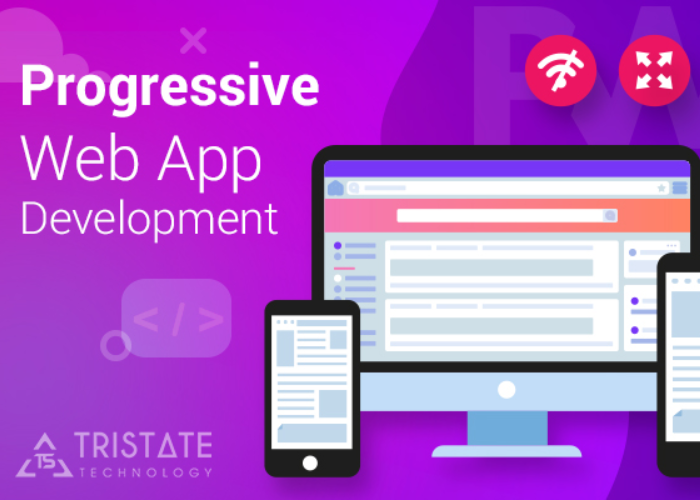The Rise of Progressive Web Apps: The Future of Mobile Development

The mobile web is evolving rapidly, and businesses are looking to take advantage of the latest technology. One of the newest trends in mobile web development is Progressive Web Apps (PWAs). Progressive Web Apps are a new way of developing web applications that offer the same features as a native app, but with the added benefits of being more secure, reliable, and easier to maintain. In this blog, we will discuss what Progressive Web Apps are, the advantages of PWAs, how to create a Progressive Web App, the challenges faced with Progressive Web Apps, and how PWAs compare to native apps. We will also look at what the future of mobile development holds and why PWAs are the way of the future.
What is a Progressive Web App?
A Progressive Web App is a web application that is designed to provide users with a fast, reliable, and engaging experience on any device. PWAs combine the best of the web and the best of native apps. They are built using a combination of web technologies, including JavaScript, HTML, and CSS, and can be accessed through any web browser. PWAs are also progressive, meaning they can be progressively enhanced as new features are added, allowing for a continuous improvement of the user experience.
Advantages of Progressive Web Apps
There are many advantages to building Progressive Web Apps. One of the biggest advantages is the ability to reach a wider audience, as PWAs can be accessed from any device, regardless of operating system. PWAs also offer better performance than traditional web apps, as they are designed to work offline and use less data. They also offer a more engaging experience for users, as PWAs can be installed on the home screen of a device and can send push notifications. Finally, PWAs are easier to maintain and update than a traditional web or native app.
How to Create a Progressive Web App
Creating a Progressive Web App is relatively easy, and can be done by any web developer with an understanding of HTML, CSS, and JavaScript. The first step is to create a manifest file, which is a JSON file that contains the metadata of the application, such as the name, icon, and start URL. The next step is to create a service worker, which is a script that runs in the background to handle caching, background synchronization, and push notifications. Finally, you will need to add the necessary code to the application to make it a PWA, such as adding a web app manifest and service worker registration.
Challenges Faced with Progressive Web Apps
While there are many advantages of PWAs, there are also some challenges that need to be addressed. One of the biggest challenges is cross-browser compatibility. Not all browsers support all the features of PWAs, and some features, such as push notifications, are not supported at all. Additionally, some features may require additional plugins or libraries to be installed on the device. Finally, PWAs require a high level of maintenance, as they need to be updated regularly to ensure compatibility and performance.
Progressive Web Apps vs. Native Apps
When it comes to mobile development, there are two main options: native apps and Progressive Web Apps. Native apps are applications that are specifically designed for a certain platform, such as iOS or Android. They are generally more feature-rich and perform better than PWAs, but they also require more resources to develop and maintain. PWAs, on the other hand, are designed to be platform-agnostic and can be run on any device with a web browser. They are also cheaper and easier to develop and maintain than native apps.
The Future of Mobile Development
The future of mobile development is undoubtedly Progressive Web Apps. PWAs offer a better user experience than traditional web apps and are more secure, reliable, and easier to maintain than native apps. As more businesses and developers start to realize the potential of PWAs, PWAs will likely become the go-to choice for mobile development shortly.
Conclusion
Progressive Web Apps offer a unique combination of features that makes them a great choice for mobile development. They offer the same features as native apps, but with the added benefits of being more secure, reliable, and easier to maintain. Additionally, they can be accessed from any device, regardless of operating system, and are much cheaper and easier to develop than native apps. With all of these advantages, it is clear that PWAs are the way of the future, and businesses should consider investing in PWAs to stay ahead of the competition.



